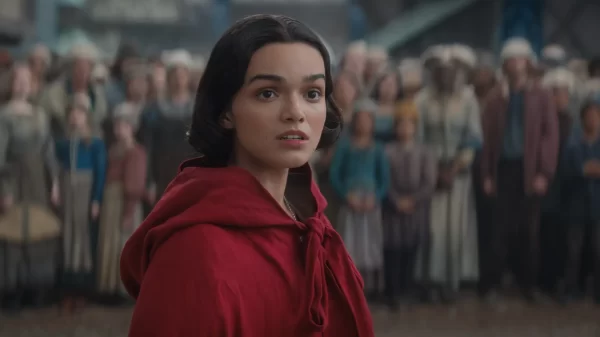Storytelling has been around since the dawn of humanity. Narrative is perhaps the most universal cognitive tool for situated understanding. The idea of interactive narratives is much more recent. Colossal Cave Adventure, published in 1976, was the first text adventure game ever made, and spawned an entire genre of games that used interactive narrative. Evolving in parallel since as early as 1940 were gamebooks with branching stories, where the reader would make choices and turn to certain pages depending on their choice. The first commercial release of this narrative style was Sugarcane Island, also in 1976, which soon morphed into the popular Choose Your Own Adventure series. Text adventures soon morphed into full graphical adventure games in the 90s, and with the CD-ROM people began preaching about the imminent takeover of Hollywood by interactive movies. As we know, that didn’t happen, highlighting the unsolved difficulties of interactive narrative.
Since then, with the rise of games, prevalence of interactive narrative has been growing. However, as a serious storytelling medium to rival movies and novels, interactive narratives have barely scratched the surface. There are scores of problems still unsolved, so most narratives present in games fall back on a few well tested techniques, such as a linear on-rails story (presented as cutscenes in between bouts of play), or branching narrative (i.e. the Choose Your Own Adventure model). How, then, can we design interactive narratives with the richness of passive storytelling? To even attempt tackling the problem, it’s going to be important to look at the types of interactive narrative and their corresponding audiences.
Generally, interactive narratives fall somewhere along the Authored, Participatory, and Emergent spectrum. In Authored narratives, the experience is tightly controlled by the author. This is the most common approach in today’s popular media, encompassing pretty much every shooter game ever made, Choose Your Own Adventures, and at the passive end of the spectrum, movies.
Participatory narratives take input from the players and incorporate them into the story. An example of this is the game Dungeons and Dragons, where individual players contribute their own dialogue and choices which influence the story in a way the author (i.e. the Dungeon Master who controls the course of the narrative) has limited control over. In the Participatory approach, the players are helping create the story, rather than traveling through something pre-authored.
Emergent narrative evolves out of the gameplay system itself. An example of this could be the game Facade, where players type in dialogue for their character to say, and the characters respond dynamically to this input, resulting in a different story every time (this is technically a mix between authored and emergent). Or a theoretical game where non-player characters use AI to respond dynamically, creating a simulated world with limitless stories. But wait, I hear you say, isn’t this the same as Participatory narrative? This is an unsolved question! Technically any emergent narrative could be seen as Participatory, but the distinction seems to lie in whether the narrative emerges automatically from the system (Emergent) or whether the player intentionally helps create the story (Participatory).
Looking at an evolution of the Threefold model of game player types developed by Craig A. Lindley, players can be fit into three types: Audience, Performer, and Immersionist. Put simply, Audience types care most about the story, Performers the gameplay, and Immersionists being fully immersed into a fictional world. These three preferences help explain the difficulty of developing interactive narratives. By focusing only on narrative, large groups are cut out of your market size. By focusing only on interactivity, the same problem occurs. This is why most AAA game titles have a mixture of focus on story and gameplay, and why few purely interactive narratives have emerged in the mass market thus far. Audience types like Authored experiences, Performers like Participatory experiences, and Immersionists like Emergent experiences. Interactive narratives, due to economic reasons, have been stifled from exploring any one type too deeply, and so the current climate of interactive narratives is barely more developed than what we had in the 70s at their inception.
One of the lone voices bemoaning this state of affairs is Chris Crawford, a game designer who left the gaming industry to research and develop a platform for creating interactive narratives that transcend the current modality. His coined term “interactive storytelling” refers specifically to experiences where “the narrative, and its evolution, can be influenced in real-time by a user”. His current work centers around building an engine that enables interactive electronic story worlds, thus enabling much more interactive storytelling than the current linear and branching models.
However, the engine is very complex, and has yet to produce an experience that could garner significant financial backing. The reasons for this are apparent if you look at the problem in terms of AI. To create a truly dynamic story world where players input via language and non-player characters dynamically respond to that language, there is a huge amount of AI engineering that must be done. Not only must language processing understand what the player is saying (a problem that Microsoft, Apple and Google are still struggling with), but the characters must then be able to take that player input and have some sort of response that is interesting, dynamic, and meaningful to the player, AND that helps create a coherent story. Undoubtedly we will eventually have that kind of software capability, but it may be the case that Crawford’s concept is simply 30 years ahead of current technology. Having the AI capabilities for that dynamic system, and making them in a way that creates fun stories are two different (and huge) problems that he is attempting to tackle simultaneously.
With improvements in AI technology and the introduction of Virtual Reality, interactive narratives are going to continue their growth as a medium, potentially eclipsing more traditional forms of media such as movies and novels. However, there is still a lot more work to do to make that happen. It’s up to us as filmmakers to develop new ways of telling stories. In doing so, we will create entirely novel experiences, evolving the very nature of storytelling itself.























